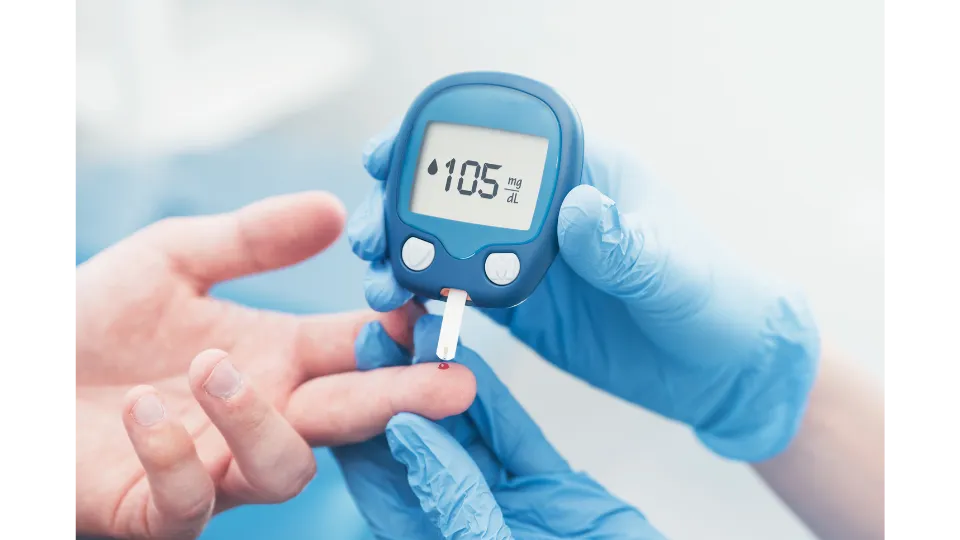
Highly Effective, Digital Sales Systems Starting at $10.00/DAY
Insurance: Medicare/ACA. Cross Sales/UpSell. Immunizations. OTC Testing. OTC Sales. Plug and Play Systems.
Blog Posts

Diabetes Decoded: Types, Symptoms, and Understanding Your Risk
“Diabetes is a great example whereby, giving the patient the tools, you can manage yourself very well.” - Clayton M. christensen
Introduction:
In today's fast-paced world, where sedentary lifestyles and poor dietary habits are increasingly common, understanding diabetes has never been more critical. Diabetes is a chronic condition that affects millions worldwide, yet misconceptions and misinformation often cloud the understanding of this disease. In this comprehensive guide, we'll decode diabetes, exploring its types, symptoms, and the crucial factors that contribute to your risk. Whether you're newly diagnosed, have a family history of diabetes, or simply want to learn more, this article aims to provide clarity and insight into this complex condition.

1. Types of Diabetes: Diabetes encompasses several distinct types, each with its own unique characteristics and causes. The most common types include:
Type 1 Diabetes: This autoimmune condition occurs when the body's immune system mistakenly attacks insulin-producing cells in the pancreas. As a result, individuals with Type 1 diabetes require insulin injections to regulate their blood sugar levels.
Type 2 Diabetes: Unlike Type 1, Type 2 diabetes is often linked to lifestyle factors such as obesity, physical inactivity, and poor diet. In Type 2 diabetes, the body becomes resistant to insulin or fails to produce enough insulin to meet its needs.
Gestational Diabetes: This type of diabetes develops during pregnancy and usually resolves after childbirth. However, women who have had gestational diabetes are at increased risk of developing Type 2 diabetes later in life.
Other Types: Less common forms of diabetes include gestational diabetes, which occurs during pregnancy, and monogenic diabetes, which is caused by mutations in a single gene.
2. Symptoms of Diabetes: Recognizing the symptoms of diabetes is crucial for early diagnosis and effective management. Common symptoms include:
Frequent urination: Excessive thirst and frequent urination are hallmark symptoms of diabetes, as high blood sugar levels cause the kidneys to excrete more urine.
Increased hunger: Despite eating regularly, individuals with diabetes may experience persistent hunger due to the body's inability to properly utilize glucose for energy.
Unexplained weight loss: In Type 1 diabetes, weight loss can occur rapidly as the body breaks down muscle and fat for energy in the absence of sufficient insulin.
Fatigue: Fluctuations in blood sugar levels can lead to feelings of fatigue and weakness, even after adequate rest.
Blurred vision: High blood sugar levels can cause fluid to be pulled from the lenses of the eyes, resulting in blurred vision and difficulty focusing.
3. Understanding Your Risk: While certain factors such as genetics and family history play a significant role in diabetes risk, lifestyle factors also contribute to the development of the disease. Key risk factors include:
Obesity: Excess body weight, particularly around the abdomen, increases the risk of insulin resistance and Type 2 diabetes.
Sedentary Lifestyle: Lack of physical activity is strongly associated with an increased risk of Type 2 diabetes. Regular exercise helps improve insulin sensitivity and promotes overall health.
Unhealthy Diet: Diets high in processed foods, sugary beverages, and refined carbohydrates can contribute to insulin resistance and Type 2 diabetes.
Family History: Individuals with a family history of diabetes are at higher risk of developing the disease themselves, highlighting the role of genetic factors in diabetes risk.
Age: While diabetes can affect individuals of any age, the risk tends to increase with age, particularly after the age of 45.4. Build relationships with potential customers
4. Managing Diabetes: While diabetes is a lifelong condition, effective management can help individuals lead healthy, fulfilling lives. Key strategies for diabetes management include:
Monitoring Blood Sugar Levels: Regular monitoring of blood sugar levels allows individuals to track their progress and make necessary adjustments to their treatment plan.
Healthy Eating: A balanced diet rich in fruits, vegetables, whole grains, and lean proteins can help stabilize blood sugar levels and promote overall health.
Regular Exercise: Physical activity is essential for diabetes management, as it helps improve insulin sensitivity, control weight, and reduce the risk of complications.
Medication: For individuals with Type 1 diabetes, insulin therapy is essential for regulating blood sugar levels. In Type 2 diabetes, medication such as oral glucose-lowering drugs or insulin injections may be prescribed to help manage the condition.
Regular Medical Checkups: Routine medical checkups allow healthcare providers to monitor diabetes control, screen for complications, and adjust treatment as needed.6. It drives long-term results
Conclusion:
In conclusion, diabetes is a complex but manageable condition that requires careful attention to various factors, including type, symptoms, and risk factors. By understanding the different types of diabetes, recognizing common symptoms, and assessing individual risk factors, individuals can take proactive steps to manage their health effectively. Whether you're living with diabetes or supporting a loved one, education and awareness are key to living well with this condition. We encourage you to share your thoughts and experiences in the comments below. Together, we can support each other on the journey to better health and wellness.
